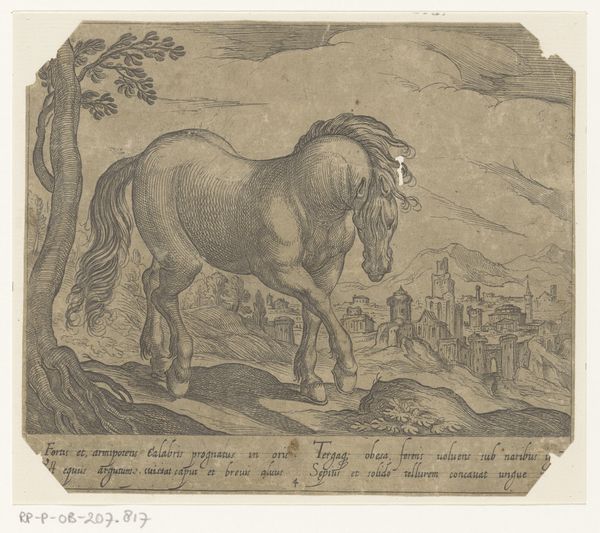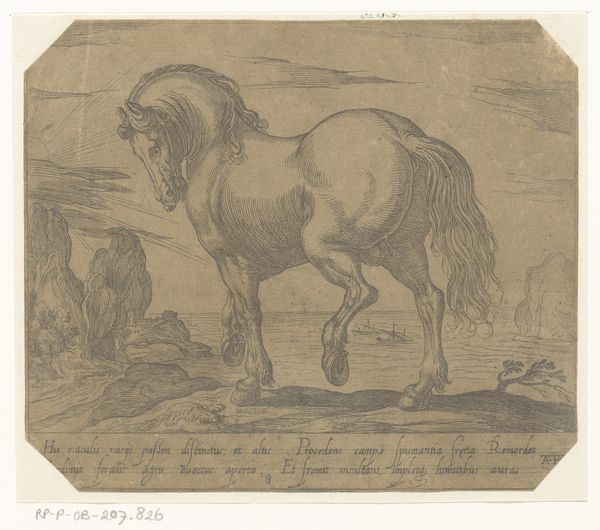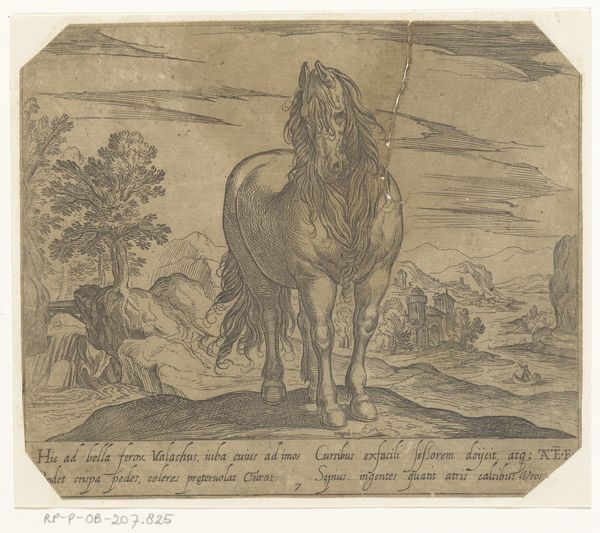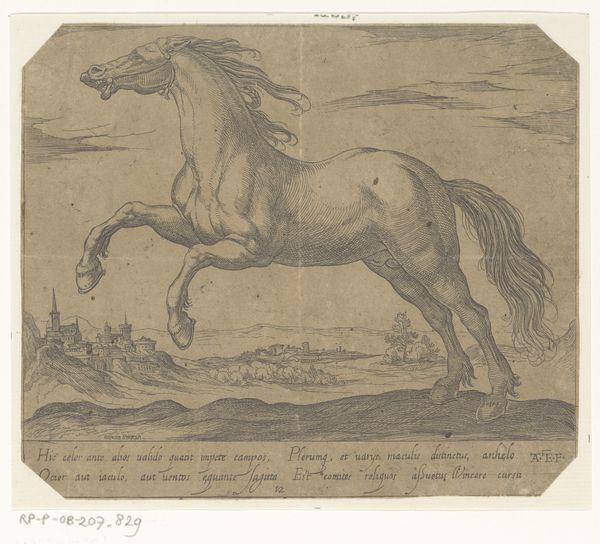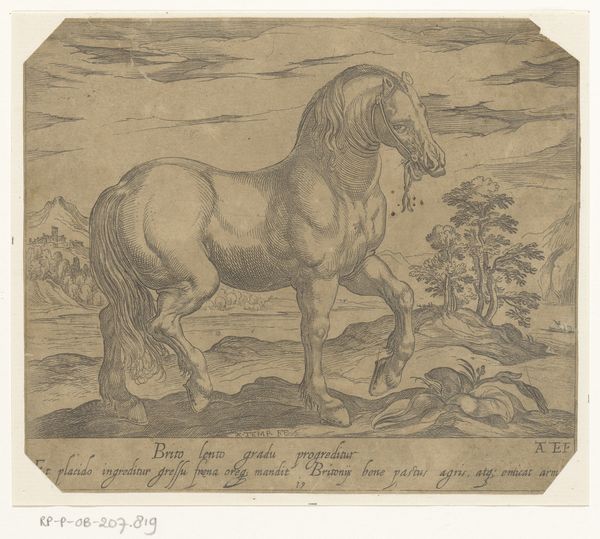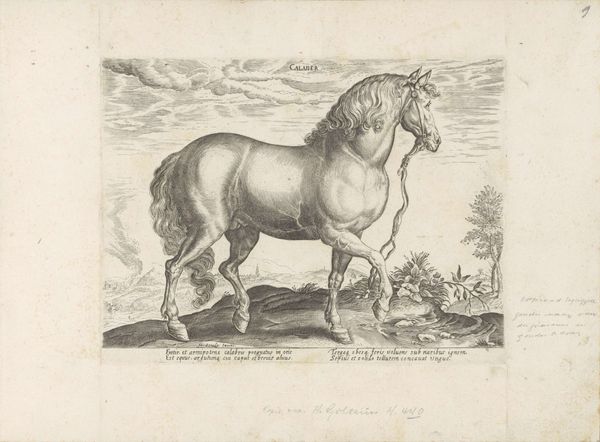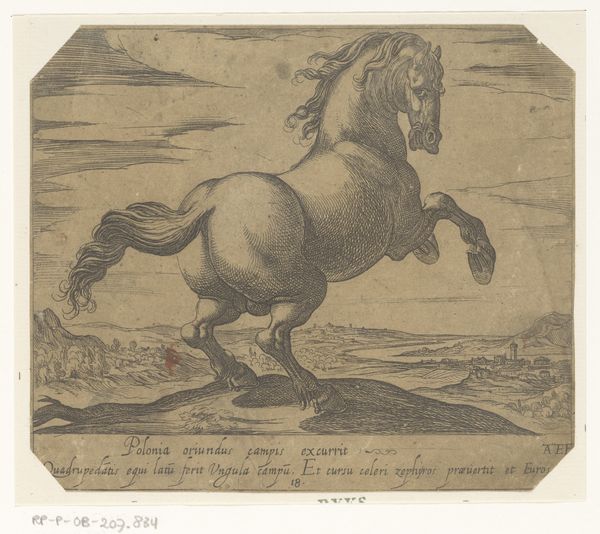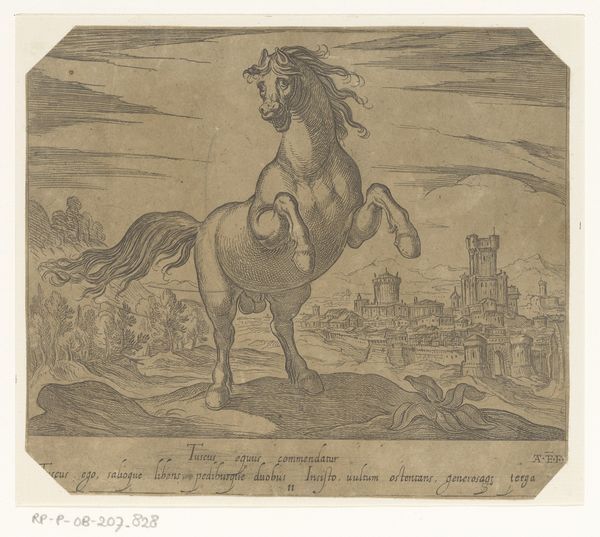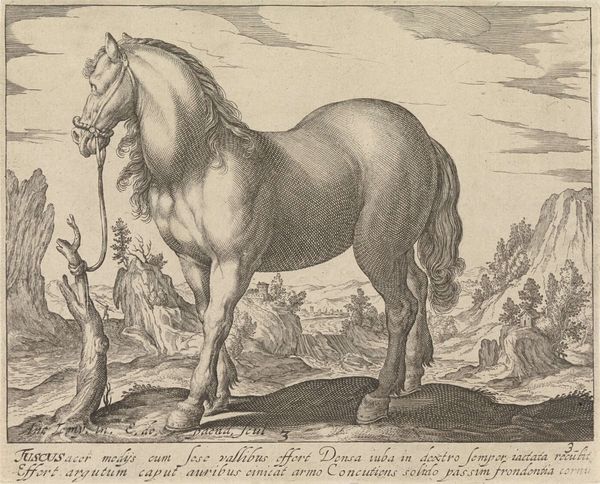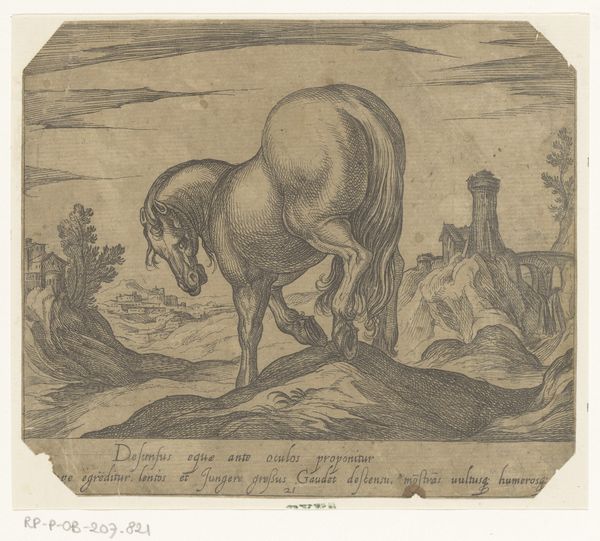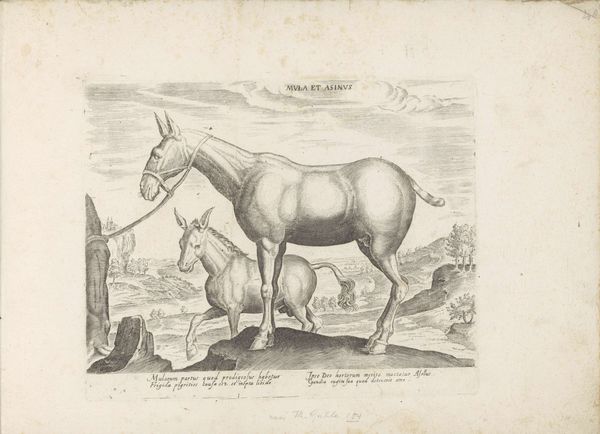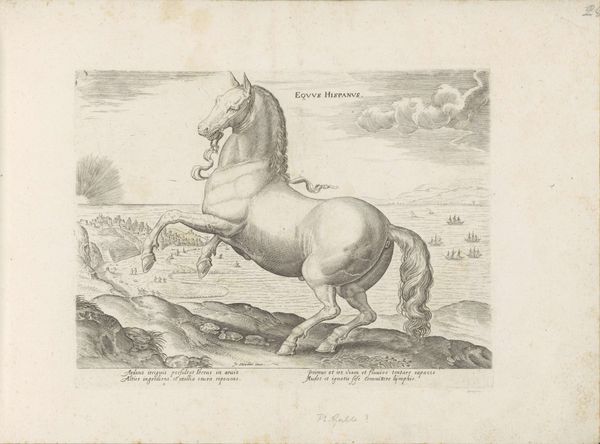
drawing, paper, engraving
#
drawing
#
landscape
#
figuration
#
paper
#
11_renaissance
#
horse
#
line
#
engraving
Dimensions: height 140 mm, width 164 mm
Copyright: Rijks Museum: Open Domain
Editor: Here we have "A Horse Attached to a Tree Trunk," a drawing by Antonio Tempesta from 1590. It’s quite detailed, an engraving really, and the horse dominates the composition. There is this sense of latent energy about it despite its static pose. How do you interpret this work? Curator: Well, it's vital to place this image within its historical context. Tempesta, active in the late Renaissance, operated in a world increasingly shaped by princely power and spectacles of authority. How do you think the image of a powerful horse, carefully rendered, played into that environment? Editor: Hmm…it certainly emphasizes strength and nobility, the sort of animal only the wealthy could afford. Was it perhaps about projecting status? Curator: Precisely. Consider how imagery circulated. Engravings like this weren't just art objects; they were easily reproducible and disseminated. The horse becomes a symbol, potentially aligning the owner or patron with specific virtues like military prowess or aristocratic standing, impacting socio-political messaging. What does the detailed rendering suggest about artistic patronage during that period? Editor: That they cared for details and that they were wealthy. This wasn’t some quickly made sketch. So these drawings reinforced specific power structures, shaping social perceptions, almost acting as an early form of propaganda? Curator: In a way, yes. And it shows how seemingly simple imagery contributed to the cultural and political landscapes of the time, affecting people's understanding of status and authority. Think of the printing press' effect on knowledge. How did printed images revolutionize Renaissance society? Editor: I see now how it shows much more than just a horse and a tree. It has power structures hidden within it. Curator: Exactly! Every detail is carefully selected for symbolic weight, influencing the viewers perception in the era.
Comments
No comments
Be the first to comment and join the conversation on the ultimate creative platform.
